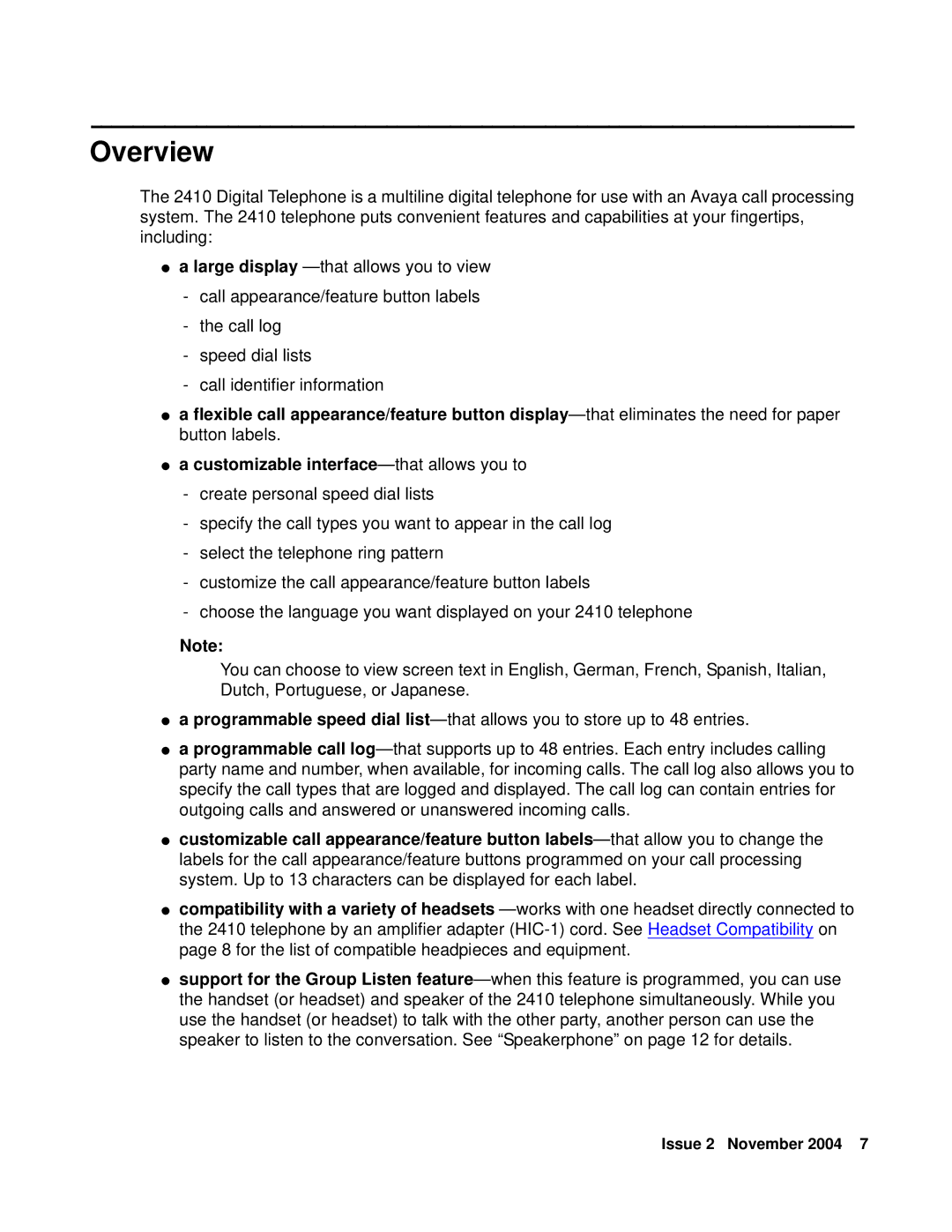Overview
The 2410 Digital Telephone is a multiline digital telephone for use with an Avaya call processing system. The 2410 telephone puts convenient features and capabilities at your fingertips, including:
●a large display —that allows you to view
-call appearance/feature button labels
-the call log
-speed dial lists
-call identifier information
●a flexible call appearance/feature button display—that eliminates the need for paper button labels.
●a customizable interface—that allows you to
-create personal speed dial lists
-specify the call types you want to appear in the call log
-select the telephone ring pattern
-customize the call appearance/feature button labels
-choose the language you want displayed on your 2410 telephone
Note:
You can choose to view screen text in English, German, French, Spanish, Italian, Dutch, Portuguese, or Japanese.
●a programmable speed dial list—that allows you to store up to 48 entries.
●a programmable call log—that supports up to 48 entries. Each entry includes calling party name and number, when available, for incoming calls. The call log also allows you to specify the call types that are logged and displayed. The call log can contain entries for outgoing calls and answered or unanswered incoming calls.
●customizable call appearance/feature button labels—that allow you to change the labels for the call appearance/feature buttons programmed on your call processing system. Up to 13 characters can be displayed for each label.
●compatibility with a variety of headsets —works with one headset directly connected to the 2410 telephone by an amplifier adapter (HIC-1) cord. See Headset Compatibility on page 8 for the list of compatible headpieces and equipment.
●support for the Group Listen feature—when this feature is programmed, you can use the handset (or headset) and speaker of the 2410 telephone simultaneously. While you use the handset (or headset) to talk with the other party, another person can use the speaker to listen to the conversation. See “Speakerphone” on page 12 for details.
